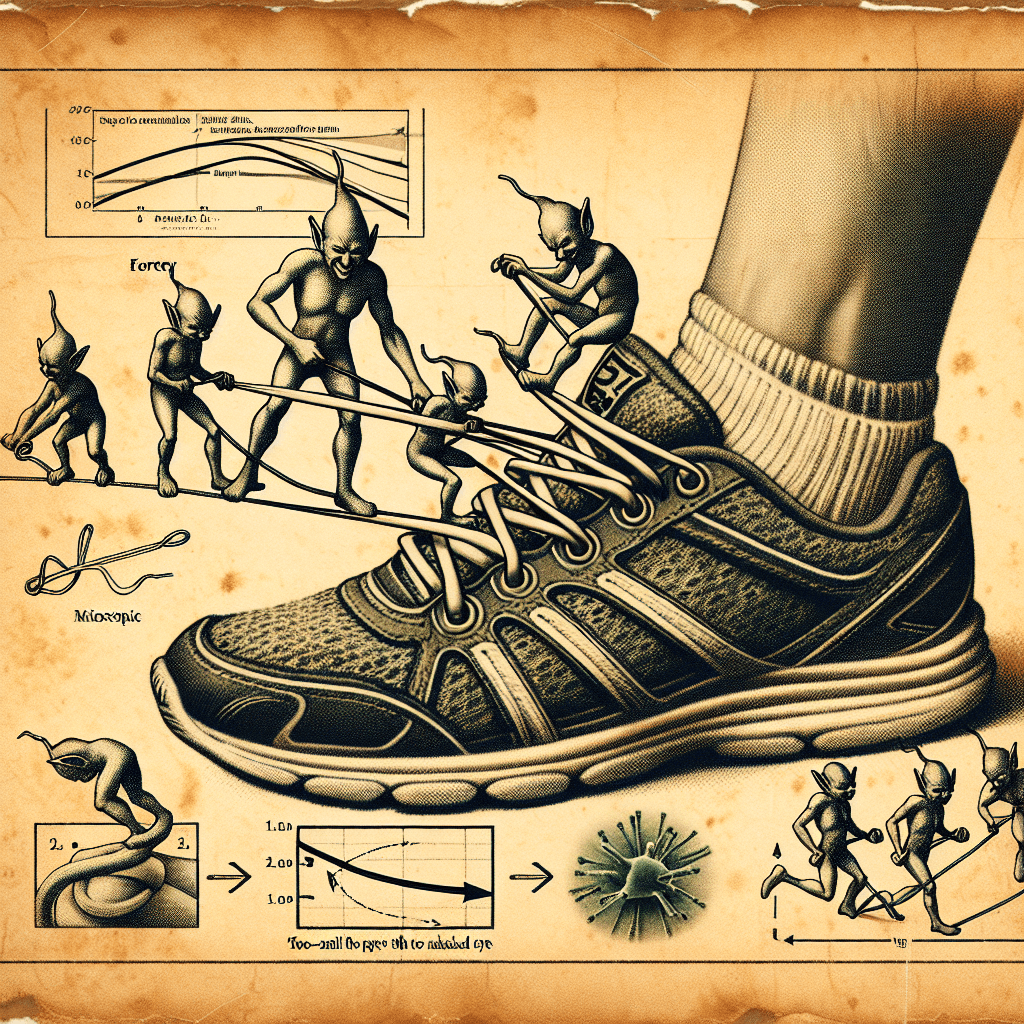Solved! The Science Behind Why Your Shoelaces Mysteriously Untie Themselves
Ever wondered why your securely tied shoelaces come undone all by themselves? It's not bad luck—it's a fascinating interplay of physics and mechanics happening with every step you take.


Too Long; Didn't Read
The force of your foot repeatedly hitting the ground loosens the knot, while the whipping motion of the free ends of the laces works to pull them undone.
Solved! The Science Behind Why Your Shoelaces Seem to Mysteriously Untie Themselves
Ever dashed out the door, only to find yourself tripping over an untied shoelace moments later? You know you tied them securely! It's a frustratingly common experience that makes you wonder: why do your shoelaces seem to mysteriously untie themselves? It’s not gremlins or bad luck; it's actually a fascinating interplay of physics and mechanics happening right at your feet. This post delves into the science behind this everyday annoyance, revealing the forces conspiring against your perfectly tied knots.
The Knotty Problem: It Starts with How You Tie
The most common way people tie their shoes involves creating a starting knot and then forming two loops tied together. However, there are two subtle variations of this final bow knot, and one is significantly weaker than the other:
- The Granny Knot: If you wrap the second loop the same way you wrapped the first knot, you create a granny knot. This knot tends to sit vertically along the shoe and is inherently less stable.
- The Square Knot (or Reef Knot): If you wrap the second loop in the opposite direction of the first knot, you form a square knot. This knot sits horizontally across the shoe and is much more secure.
Many people unknowingly tie a granny knot, setting the stage for premature untying even before they take their first step.
The Science of Motion: Invisible Forces at Work
Once you start moving, your shoelaces are subjected to a surprising amount of force. Research, including studies from institutions like UC Berkeley using slow-motion cameras and accelerometers, has broken down exactly what happens:
- Impact Force: Every time your foot strikes the ground while walking or running, it generates a significant impact force – estimated to be up to seven times the force of gravity (7 Gs). This impact travels up through your shoe and directly strikes the knot, jarring and deforming it slightly with each step.
- Inertial Force: As you swing your leg forward, the free ends and loops of your shoelaces whip back and forth due to inertia. This swinging motion creates an outward pulling force on the knot.
It's the combination of these two forces, acting repeatedly, that initiates the untying process.
Knot Failure: A Step-by-Step Catastrophe
The untying isn't instantaneous; it's a gradual failure cascade fueled by the forces of walking:
- Loosening: The repeated impact from striking the ground begins to loosen the knot's central hold. Think of it like repeatedly hitting a tight structure – eventually, it starts to give.
- Slipping: Simultaneously, the inertial forces generated by the swinging leg pull on the loops and free ends. As the knot loosens from the impact, these pulling forces cause the laces to slip slightly within the knot structure.
- Avalanche Effect: Once the slipping starts, it accelerates. Each step loosens the knot a bit more, allowing the inertial forces to pull the laces further out. This creates a positive feedback loop – the looser the knot gets, the easier it is for the laces to slip, leading rapidly to complete knot failure. It often takes only a few strides once this process gains momentum.
Lace Type Matters Too
The material and shape of your shoelaces also play a role:
- Round Laces: Often coated or made of synthetic materials, these tend to have less friction than flat laces, making them more prone to slipping and untying.
- Flat Laces: Typically made of cotton or textured synthetics, these generally offer more surface area and friction, helping the knot hold more securely.
- Material: Stiffer, slicker materials will untie more easily than softer, more pliable ones like cotton.
Conclusion: Mystery Solved, Knot Physics Revealed
So, the next time you find your shoelaces inexplicably untied, remember it's not magic – it's physics. The powerful combination of foot-strike impact jarring the knot and the inertial forces of your swinging leg pulling on the laces work together to gradually unravel even a reasonably tied knot, especially if it's the less stable granny knot. Understanding these forces explains why this common annoyance occurs. While you can't stop physics, you can fight back by ensuring you're tying a secure square knot and perhaps choosing flatter, textured laces for better grip. Now you know the science behind why your shoelaces seem to have a mind of their own!
More Articles

Why do movie punches sound so much crunchier and louder than real ones?
That sickening, bone-crunching punch you hear in the movies is a lie, and the secret ingredient is probably sitting in your refrigerator right now.

What makes a beer bottle suddenly foam over just from a light tap on top?
It’s not magic, it’s a shockwave; discover the explosive physics that turns a gentle tap on your beer bottle into an instant foamy geyser.

Why do police officers touch the back of a car during a traffic stop?
It’s not a random habit; that simple touch is a calculated, old-school tactic designed to leave a crucial and potentially life-saving piece of evidence behind.